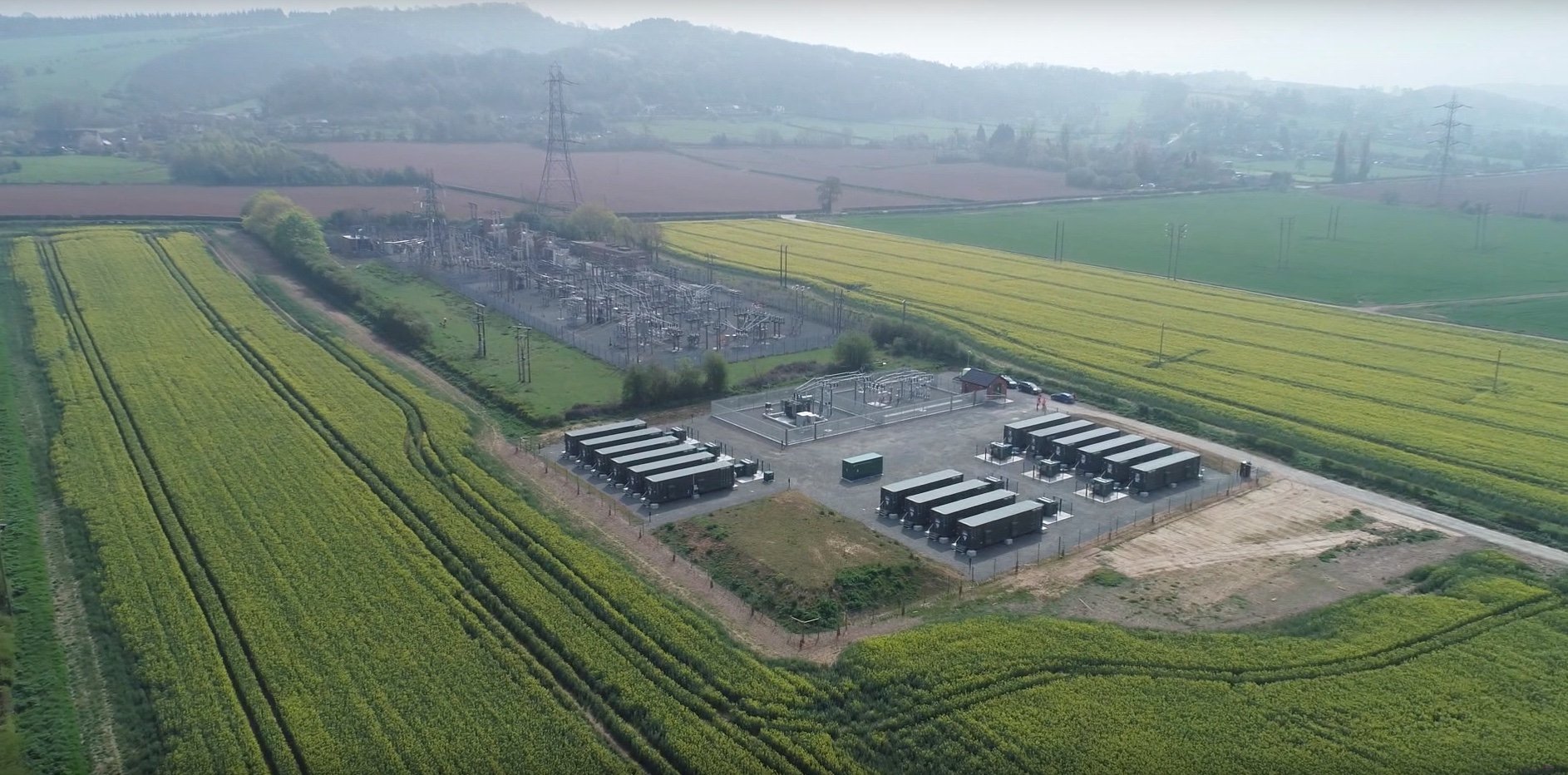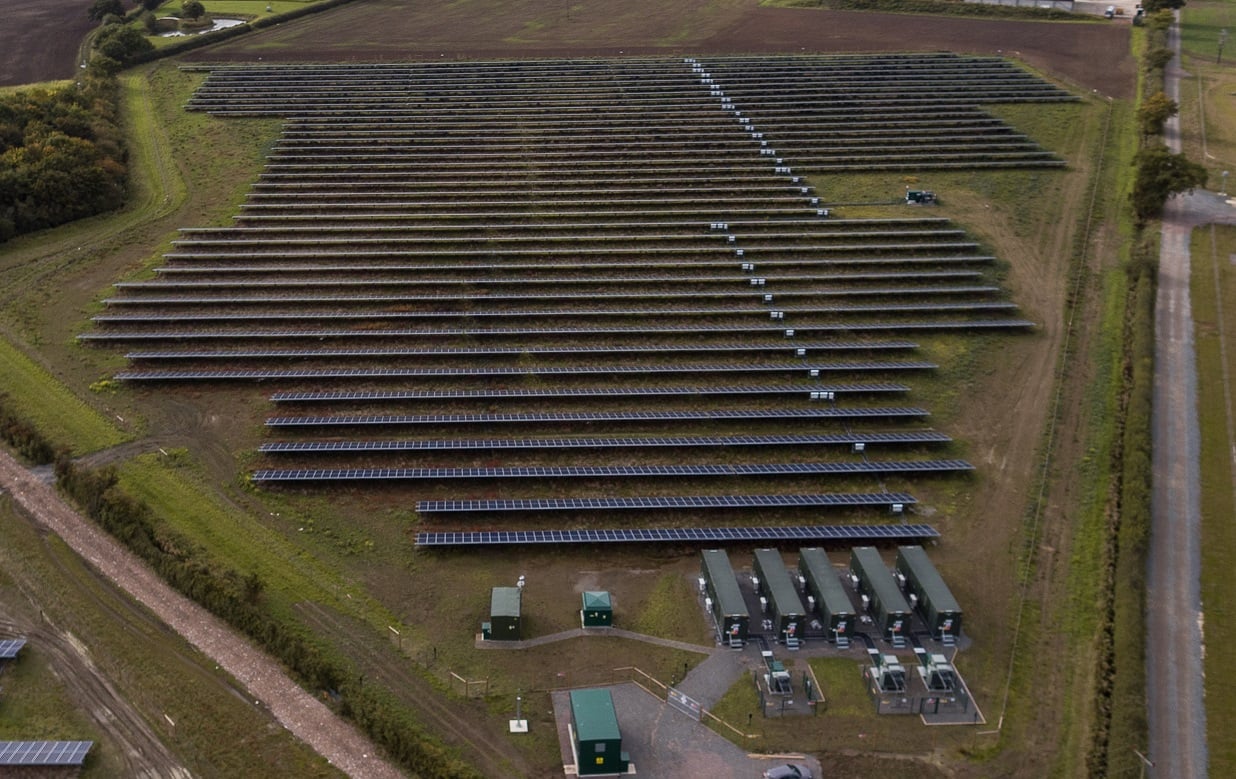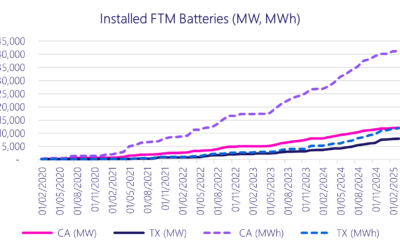
Renewable energy and energy storage project developer Anesco has handed aggregator Flexitricity the keys to 19.5MW of battery assets, with the latter set to earn revenues from four different ‘streams’.
Flexitricity will provide market access for the batteries, which form a small portion of Anesco’s portfolio. The developer claims that by the end of next year it will have developed 380MW of UK battery storage.
Enjoy 12 months of exclusive analysis
- Regular insight and analysis of the industry’s biggest developments
- In-depth interviews with the industry’s leading figures
- Annual digital subscription to the PV Tech Power journal
- Discounts on Solar Media’s portfolio of events, in-person and virtual
Andy Lowe, head of business development at Flexitricity, said that with the UK market already moving away from the long-term contracted models through which it began only a couple of years ago, battery projects will increasingly need to play into merchant markets to gain revenues. Flexitricity meanwhile has nearly 0.5GW of distributed energy resources playing into its own virtual power plant and holds an energy supplier license which helps grant access to additional market opportunities.
“In a relatively short timeframe battery developers, investors and owners have had to adjust their thinking and get their heads around changing revenue stacks,” Lowe told Energy-Storage.news.
“There’s been a shift away from National Grid’s longer-term forward bought services, and the more bankable revenue streams that these brought, towards merchant operation and securing spreads between different energy markets based on within-day decisions.”
Transmission network opening up quickly to battery participation
The 19.5MW battery installation, at Larport Farm, England, will deliver frequency response services to transmission system operator National Grid, while also trading in day-ahead and intraday trading markets, as well as joining the Balancing Mechanism. The chance to join the latter comes after some reforms of market regulation, and Flexitricity’s Andy Lowe welcomed the changes, which mean smaller, distributed resources can contribute.
“The Balancing Mechanism has been around for years and is used every day by National Grid to balance the system, but in the past it has been dominated by large suppliers and generators. The significant change we have seen over the last 12 months is suppliers like Flexitricity opening up the Balancing Mechanism for commercial and industrial (C&I) sites and for smaller distributed generators that previously have not had access,” Andy Lowe said.
“National Grid has welcomed these innovations and whilst the rules of engagement have been there for years, some of those applicable to providers like us entering the Balancing Mechanism have only recently been tested.”
The network operator opened up a distributed resources desk as a new platform for managing distributed resources on its network, which Solar Media’s UK editor Liam Stoker interviewed Anesco asset manager Mike Ryan about back in February.
Ryan said the new system, while enabling wider participation in the BM, would “offer a lot of benefit”, in a short space of time. Flexitricity’s view was that the opening of the distributed resource desk was a sign of “fantastic commitment” from National Grid.
“We expect to bring more assets into the Balancing Mechanism and for wider access to be available for more users/providers towards the end of this year/start of next, with the rollout of project TERRE (Trans European Replacement Reserve Exchange),” Lowe said
Being dynamic is absolutely key to successful asset optimisation
Flexitricity wants to optimise and balance the participation of the batteries in those different markets, which will have competing needs and could be offered up at the same time, in some cases. In other words, “market access and agility is key”, Andy Lowe said.
“Being dynamic is absolutely key to successful asset optimisation. Whilst services might change over time as new opportunities emerge, our current strategy will include stacking frequency response services, if the price is right, with trading the asset in the day ahead and intraday markets, and directly with National Grid in the Balancing Mechanism. This wide-ranging market access allows us to secure the best buy and sell prices available, whilst also keeping an eye firmly on the opportunities available from delivering Ancillary Services.”
Through another deal announced in March, 16MW of Anesco’s solar-plus-battery storage at Clayhill, the UK’s first ‘true unsubsidised’ large-scale solar farm, will be optimised by EDF Energy, partnered with aggregator / supplier Upside Energy. That deal was claimed to be the first time a guaranteed floor price had been agreed for energy storage in the UK market. EDF will trade that energy using its own proprietary demand-side response platform in wholesale markets.
Download O&M in storage: Optimisation & Maintenance, a feature article from PV Tech Power Vol.11 (2017, Solar Media) from the ‘Resources’ page of this site.







